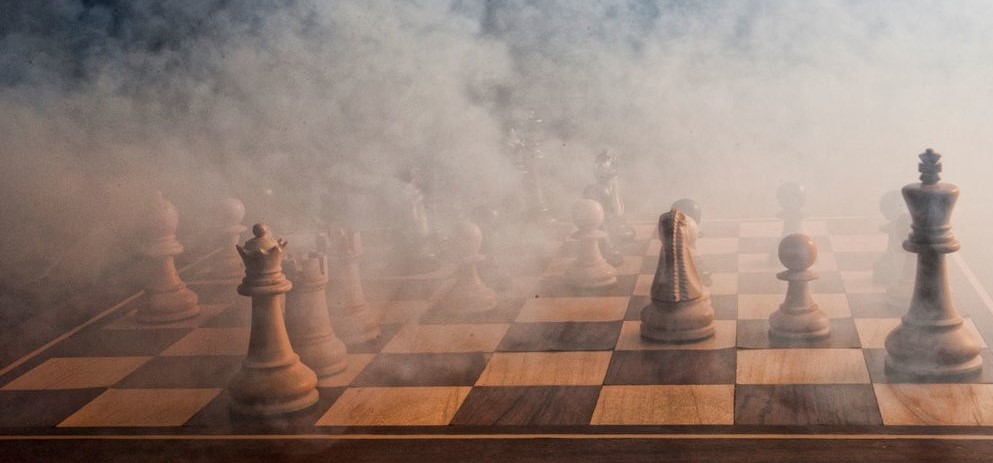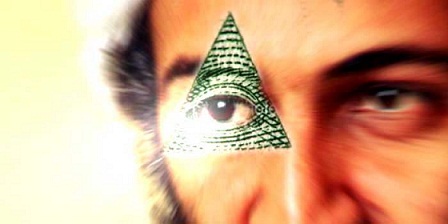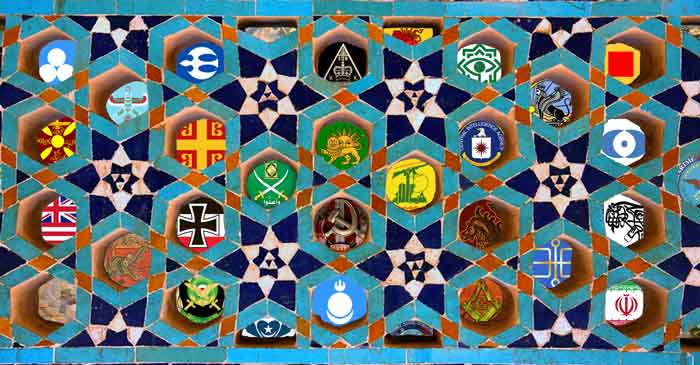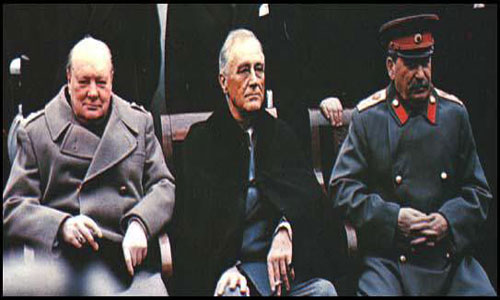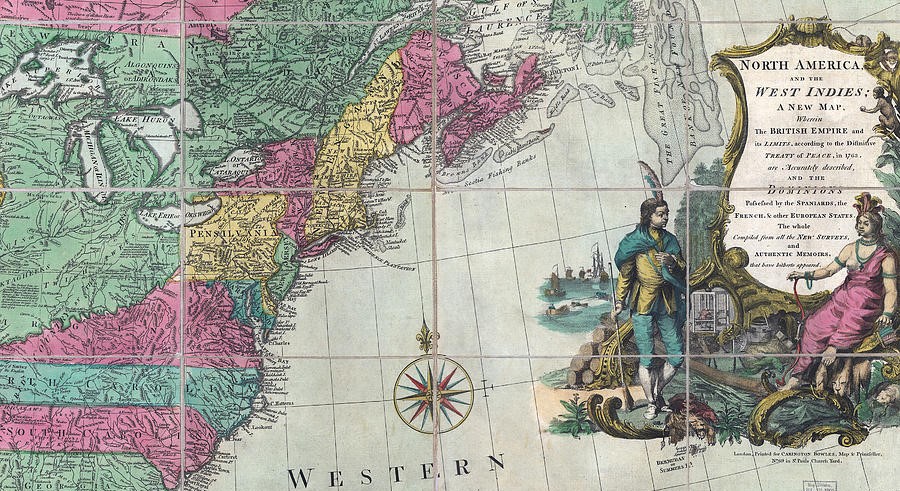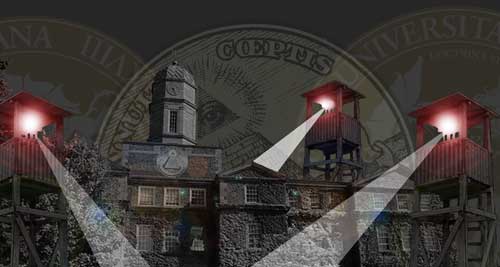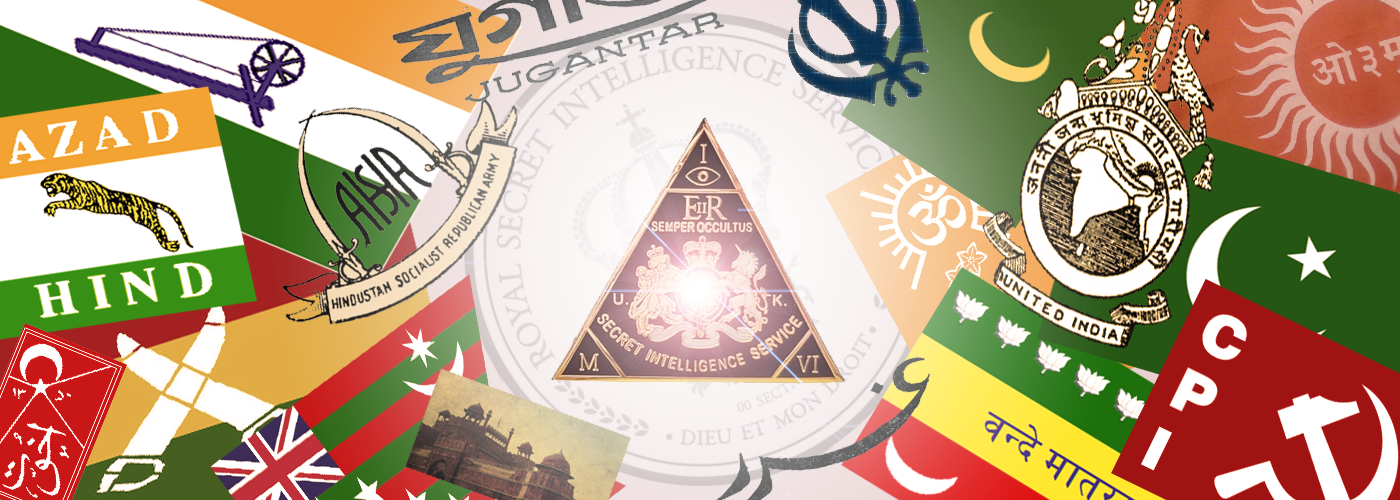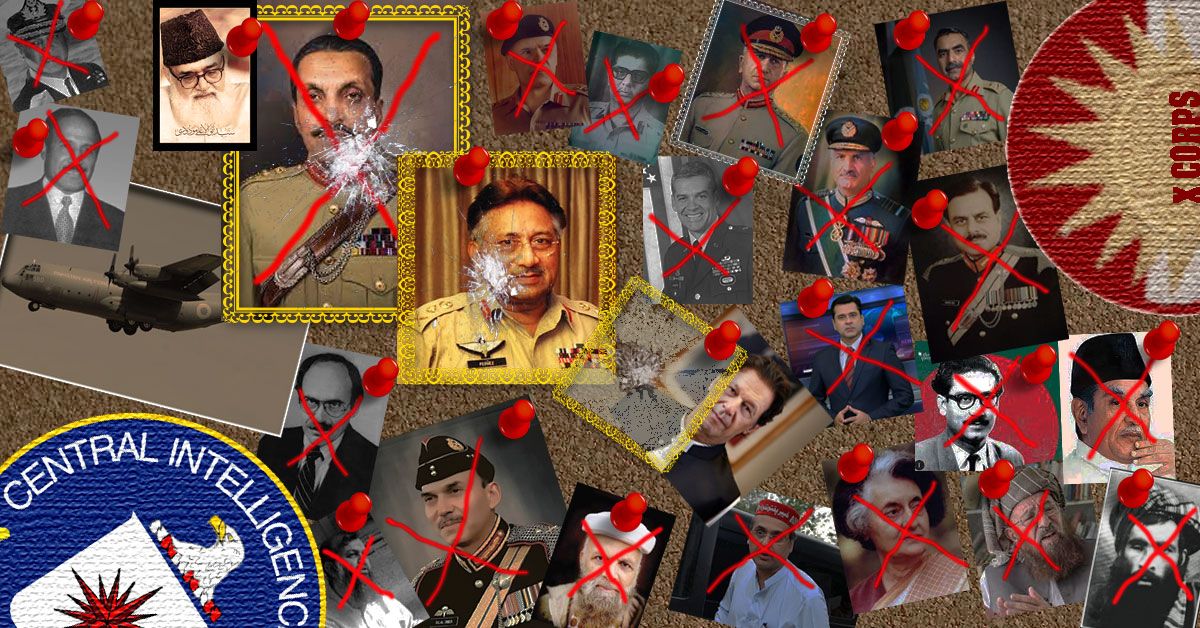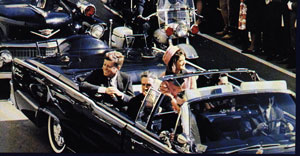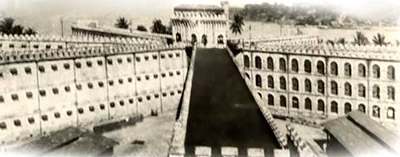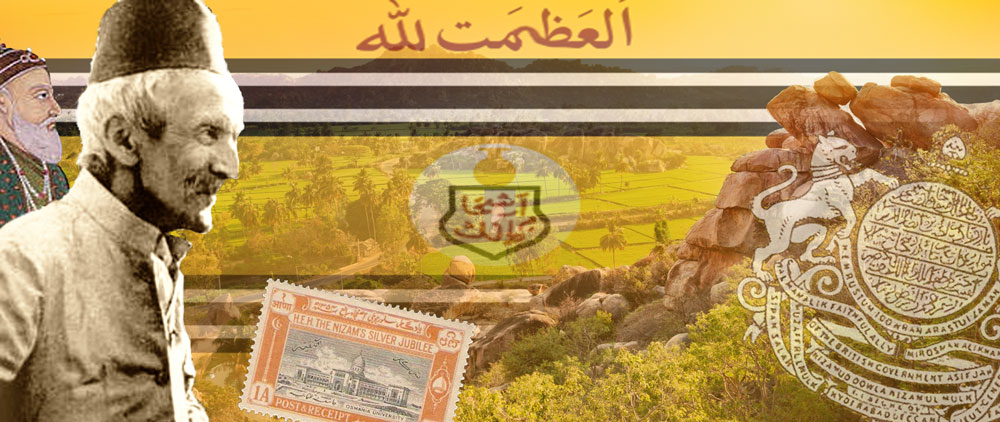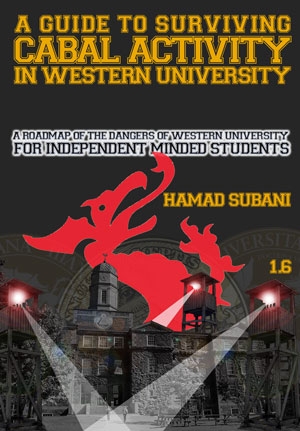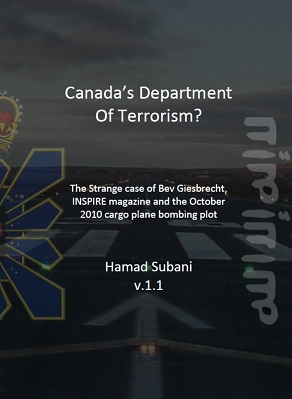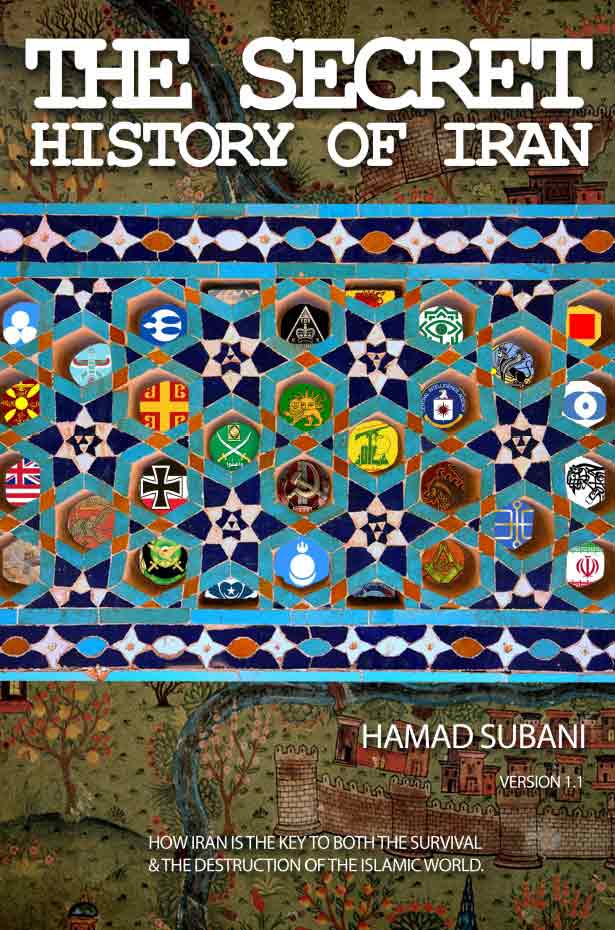The Secret Life of Mirza Ghalib
Last Updated on November 3, 2024 by Hamad Subani
In this post, I explore a completely unknown facet of the life a man considered to be the last of the great classical poets of the Urdu language.

Mirza Asadullah Beg Khan (1797–1869), also known as Mirza Ghalib (Ghalib being his pen-name) was a close friend of the last Mughal Emperor (who was also an accomplished poet). Ghalib was a notable person in the literary and cultural life of Mughal Delhi. Fate had it that he survived the fall of Delhi to the British in 1857, without being executed or being deported to the Andamans. But those twelve years of his life are characterized by penury, misfortune and to rest of us, mystery.
We are told the majority of his Urdu poetry [1]Ghalib wrote in Persian too, but it is his Urdu poetry which brought him fame. disappeared in the events of 1857 when his home got ransacked, and all that we are left with is a rather small booklet, which passes as Diwan-e-Ghalib, and some letters.
The general scholarly consensus of Ghalib is that of a man of high intelligence, who succumbed to spiritual weaknesses like intoxication, gambling and seeking unrealistic romances, with his downward spiral, reflecting that of Mughal Delhi following 1857.
There was a time when there were music CD players in cars. Thats when I started listening to Ghalib, sung in the melodious voice of Jagjit Singh and Chitra Singh (If you can understand Urdu/Hindi, it doesn’t get better than this). Some of his verses remain imprinted on my mind. I got the impression that many times, he was making oblique and indirect references to things/situations/events in his life, in an artful way but without giving away too many details. Here is my favorite verse:[2]I slightly modified this translation.
Hazaaron Khwahishein Aisee ki Har Khwahish Pe Dam Nikle
Bohot Nikle mere armaan lekin Phir Bhee Kam Nikle
Thousands of desires, each worth dying for…
many of them I have realized…yet I yearn for more…
Nikalna Khuld Se Aadam Ka Sunte Aaye The Lekin,
Bade Be-Aabru Hokar Tere Kooche Se Hum Nikle.
We have heard about the dismissal of Adam from Heaven,
With humiliation and infamy, I/we left your lane.*
*Check out the very last verse. It is code-speak. Given the nuances of Urdu poetry, It could refer to:
- The dismissal of Adam from the Garden of Eden by God.
- A comment on the unworthiness of not just Adam, but all humans in general.
- Ghalib’s retreat from a lover’s lane, following some kind of scandal.
- Ghalib’s fall from grace at the Emperor’s court in Delhi and the Emperor’s anger at him (more on that later).
All this is made possible by the nuances of Urdu poetry. Here I have to digress to introduce readers to Urdu poetry. What is today known as Urdu[3]earlier it was known as Hindustani, and some variants were referred to Rekhta and Khadi Boli was a language that came into being when the armies and personnel of Muslim conquerors began conversing with the natives of the Indian Subcontinent in the bazaars of India. Its vocabulary has a heavy mix of Persian and Arabic, but its grammar is clearly “different” from Persian and Arabic, and has some kind of native underpinning, but which one remains a matter of debate. What makes Urdu so unique as a language is that it allows a skilled writer/speaker to convey emotions which can be easily picked up by a non-skilled writer/speaker. As such, Urdu poetry spread far and wide[4]The volume of literature produced in Urdu exceeds the entire corpus of Arabic literature that existed till the 19th Century. not just among the literate. It was carried across the tongues of the illiterate during casual conversations. It is this “immortality” which Urdu poets like Ghalib saw as a measure of their success. And needless to say, Ghalib didn’t care about being published. He had a Bohemian “live in the moment” approach to life, and his poetic verses were intended to be true to the particular moment he was experiencing. His Urdu poetry is in the form of ghazals, which are basically, a bunch of couplets. While all couplets in ghazal may share a similar mood or rhyme, each and every couplet can freely meander into a completely unrelated topic. A punchy couplet of his ghazal would get carried far and wide, across the Mughal court to the bazaars and streets. In contrast, English language is fairly technical, and English poetry lacks the capacity to be absorbed and related to by commoners. English poetry was usually cloistered to Elitist literary circles. And even during the heydays of the British Empire, everyday English speakers were unlikely to quote Shakespeare in day-to-day conversations. He just sounded too frilly and out-of-place. With English poetry now being somewhat non-existent,[5]Miles Mathis still recommends slightly older English poets such as Gerard Manley Hopkins, Dylan Thomas, Hart Crane, Christina Rossetti, and Edna St. Vincent Millay as genuine figures. their replacement, present-day English pop songs, even the most popular ones, are 98% lacking in depth or emotion (unless you are listening to this guy; he doesn’t get much promotion from the Phoenicians). Present-day English pop songs however, make up for their lack of depth or emotion with instrumentation and melodies,[6]In recent times, a Punjabi pop star demonstrated that he could produce a hit single without any notable lyrics or even his trademark videos featuring sexy women, simply by chanting tunak tunak tun! which they have advanced to a level never before seen in human history. So next time you get carried away by song on the radio, ask yourself is it really the lyrics, or the instrumentation and/or melodies?
Going back to Urdu poetry, the biggest theme of Urdu poetry is conveying emotions. A poet who experiences strong and genuine emotions is expected to be able to convey them through Urdu poetry, with such accuracy that a reader/listener is also able to experience these emotions. But for a poet to experience strong and genuine emotions, he must have a heart in working condition, not just physically, but spiritually. The Quran draws attention to the fact that not all hearts are equal.
Even after that your hearts were hardened and became stony, and even harder yet, for there are some stones which rivers gush out of and there are others which water comes forth from when they split open and there are still others which collapse out of awe for God.
The Quran 2:9. Trans. T.B. Irving
Have you seen someone who has taken his passion as his god? God knowingly lets him go astray and seals off his hearing and his heart, and places a covering over his eyesight.
The Quran 45:3. Trans. T.B. Irving

And so, in Mughal India, gifted people began to brag about their working hearts through the medium of Urdu poetry. The ability to speak with clarity through Urdu poetry, the ability to compose lines on the go, started being seen as a genuine hallmark of intellect, intelligence, and a working heart that picked up emotions. And as such, gifted poets started being courted by Mughal royals. While the Mughals had no formal Intelligence Agency, gifted poets were always assured of a direct line to the Emperor. Their feedback, their observations and their anecdotes would be directly relayed to the Emperor, sometimes in person. In return, they got more than just a pension…..they would develop a strong personal relationship with the Emperor. There are anecdotes of Ghalib talking the Emperor into getting mangoes from the royal orchard. Ghalib’s contemporary Zauq, was the personal tutor and mentor of the last Mughal Emperor. Both he and Zauq would exercise considerable personal influence over the last Mughal Emperor. Sadly Zauq died (or according to some accounts, was poisoned) just two years shy of the 1857 Rebellion, leaving Ghalib the only notable poet with a direct line to the Emperor.
Ghalib reminiscing happier times at the court of the Emperor….
Bazm-e-shehnshah mein ashaar ka daftar khula
Rakhiyo ya rab! yeh dar-e-ganjina-e-johar khula
The (Poetic) assembly of the Emperor inaugurates a Department of Verses
Oh Allah! Let the door of this treasure of brilliance remain open for ever
Shab huii, Anjum-e-Rakhshanda ka manzar khula
Is takalluf se ke goya buutkade ka dar khula
Night befell and the scene of star studded brilliant sky unfurls
With such glamour and hoopla as if door of a temple has swung open.[7]Translation by Asghar Vasanwala. Slightly modified
Ghalib on his ability to see things other’s didn’t (which as we shall later see, also included conspiracy and intrigue)….
Meh’ram nahin hai tu hi nawa-haa-e-raaz ka
Yaan, warna jo hijab hai, parda hai saaz ka
You are the one who is not intimate to voices of secrets
The veil is in fact the skin of a drum.[8]Translation done by Asghar Vasanwala. Slightly modified
Around the same time, many Phoenicians disguised as Muslims had infiltrated the Mughal Court and were vying for a close, personal relationship with the Emperor. But being the sanguine, cold-blooded reptiles that they were, they lacked the heart to produce a single line of Urdu poetry. Instead, we find them reinventing themselves as doctors/quack-doctors (hakims) offering a whole array of treatments. And back then it was just as difficult to verify the veracity of their expertise just as it is difficult today to verify the claims of Dr. Fauci. There is another reason why crypto-Phoenicians in the Islamic world preferred to be doctors. It allowed them to poison royals who were not in line with their agendas. I have already hinted at what may have happened to Zauq. In addition, a promising crown prince had been mysteriously poisoned in 1856 (and the son of this crown prince would be hunted and shot dead in the Rebellion of 1857).
Now to digress, Miles Mathis discusses how the Phoenicians, lacking natural talent (or the ability of cultivate natural talent) end up becoming jealous enemies of those who do possess such inimitable natural talents. Later when they take control of a culture, they deliberately destroy and dumb down the arts, because earlier talented poets and artists keep reminding them of the crassness and crudeness of their own minds. To quote,
As I have shown in hundreds of papers over the past 35 years, at first this was a somewhat organic outcome of the Wasteland these old peerage families had created, starting in the late 19th century. After centuries of creating (or hiring others to create) magnificent art, music, sculpture, poetry, architecture, and literature, Europe became oversaturated with all this art. The artists got dejected, thinking it had all been done, or got lazy, thinking they could produce equal product with a lot less effort, or simply fell headlong into a pit of corruption—a fall they are still falling. They became bored with the past and didn’t believe in religion anymore, so they had no subject matter left except their own petty and pinched lives. But pretty soon they embraced this corruption and emptiness, selling it back to themselves as more authentic. Whatever tawdry, banal, corrupted thing they happened to produce that day was more authentic than the Sistine Chapel. And since you don’t need any technique to do that, all technique went out the window as well. Why put yourself out to learn how to paint or write when you are being bad on purpose?
This is why Gluck’s poetry, and all Modern poetry, looks and sounds like it does. No use wasting any time trying to do something interesting with words, sounds, meter, vocabulary, or emotions, when all you get credit for as a Modern is shallow political posing and exhibit-your-symptom whining.[……]
In the same way, this stripped-down “poetic” technique, which is actually just flat bare droning prose, is also supposed to be more authentic. You aren’t allowed anything interesting in the poem at all: no rhymes, meter, expressive words, beautiful or subtle turns, evocative references or—least of all— positive feeling of any kind. That would be inauthentic, because nothing is authentic but death, loss, ugliness, and despair.

Even before the fall of Delhi in 1857, the Phoenicians based out of Fort William in Calcutta had gone to work sealing the coffin of the Hindustani language. After meticulously studying Hindustani language, they realized they could create communal tensions between Hindus and Muslims by subdividing this great language into two variants. The first one, intended for Muslims, would be called Urdu (maybe a nod to the Babylonian city of Ur) and would draw lesser on native vocabulary and more on Arabic and Persian. This variant is still the successor of Hindustani, and it still retains the Arabic script of the original Hindustani. The second variant would be called Hindi and would strictly retain native vocabulary (although this turned out to be impossible in practice). In addition, they introduced a new script for Hindi, by recycling that of the almost-extinct Sanskrit language. This in effect, permanently sealed off new speakers of Hindi from all great works and poetry of the Hindustani language, which despite being in Arabic script, were still their rightful heritage. Some even say that the imposition of brand new Hindi on Uttar Pradesh was part of a program of deliberate backwardification of the region. A brand new language would have very limited number of literary works, maybe just in the hundreds, resulting in a general decline in literacy and culture. Soon enough, Hindi culture and expression started being manufactured and dictated out of Bollywood, in British Bombay. Using the new medium of film, the Phoenicians started controlling the direction of Indian culture. And with each generation, Bollywood productions became more and more crass. And today Bollywood has devolved into softcore porn, and shameless imitation of Hollywood scripts produced by the Phoenicians in Langley. A cursory look at the IMDB page for latest Bollywood releases (as well as Netflix®, which now operates a complete Indian division) shows the Phoenician Divide-the-Sexes/Men-Are-Pigs project is now active in India too (And when they are not doing that, they are spreading hate). As for Urdu, the fall of Delhi would be the fall of Urdu too. There were many genuine Urdu poets who came later, but none had the sophistication of Zauq, Ghalib and Daagh, who can be considered the last poets of classical Urdu. Later, Phoenicians started using Urdu poetry to push Communism, and Faiz Ahmed Faiz was one such operative of theirs. Despite this acrimonius divorce, Urdu and Hindi still remain mutually intelligible, which is why Bollywood movies still get watched in Pakistan, and Pakistani soap operas still get watched in India (without the subtitles).
Back to Ghalib, he was thus the last genuine confidante/advisor of the Emperor, given the sudden death of Zauq. This was the Secret Life of Ghalib, which has still remained hidden from history, and which is the thesis of this article. And given the events of 1857 which unfolded following the death of Zauq, Ghalib was guiding (or rather attempting to guide) the Emperor through the biggest existential crisis the Mughals had ever faced.
Ghalib was guiding (or rather attempting to guide) the Emperor through the biggest existential crisis the Mughals had ever faced.

I have already outed the biggest crypto-Phoenician in the Mughal court, Hakim Ahsanullah Khan, in a 2018 paper. This man of Kashmiri origin, exercised considerable influence over the Emperor as his personal physician. He would become the acting Prime Minister during the four months of the siege of Delhi by the British. Even many rebels at one point, grew suspicious of him and wanted to execute him. Hakim Ahsanullah Khan was the one who made the fateful decision to have the Emperor and his family move from a secure inner citadel inside the Delhi fort to Humayun’s tomb[9]This was symbolic move, to put an end to the Mughals at a place where tied to their beginnings, with Humayun being the founder of the Mughal Empire. where they would be handed over on a silver platter to the British. Nothing of this sort had happened during the earlier capturing of Delhi by the Marathas and the Sikhs. And the Mughal royals would generally emerge unscathed in the numerous sieges of Delhi prior to 1857 because they had created a a secure inner citadel, which could not be breached, even by the British. After the fall of Delhi, Hakim Ahsanullah Khan even supplied testimony to the British, which helped them convict the Emperor. And interestingly, after the fall of Delhi, the British immediately demolished this secure inner citadel within the Red Fort, brick-by-brick.[10]There are only drawings which exist today, which reference a great palace within the the walls of this citadel. There were even plans to raze the entire walls of the Red Fort but this was prevented by a more realistic British officer.
When I first discovered Hakim Ahsanullah Khan, I was sure that his descendants would have been handsomely rewarded by the British, and would still be intriguing in the political affairs of Muslims of the Subcontinent. As I discovered, Hakim Ahsanullah Khan would quietly retire to the Spookopolis of Baroda, but his secret descendants would later be propped up in British Bengal as the Nawabs of Dhaka. Khawaja Nazimuddin, a founding figure of Pakistan later emerges among them!
In a 2022 paper on 1857, I stumbled across another crypto-Phoenician, Fazl-e-Haq Khairabadi. He was a religious leader linked to the Nawabs of Awadh, who was propped up in the Mughal court to fill in the vacuum in religious leadership created by the suspicious death of Zauq (Zauq was a poet and a religious figure). Fazl-e-Haq Khairabadi is credited with the fateful decision of allowing the so-called rebels into Delhi, and granting them an audience with the Emperor. The ragtag and ill-disciplined army of rebels could have never entered the city without inside help, as the defenders of the city were very suspicious of a group which had betrayed their previous masters, and were still wearing their British uniforms. Without the intervention of Fazl-e-Haq Khairabadi, they would have been greeted with the same hostility with which the Marathas and the Sikhs were earlier greeted with. This turned out to be the biggest tactical mistake the Mughals had ever made. As my earlier investigations have proved, this movement, which emerged from the British barracks of Bengal, was still under the secret control of British Intelligence (despite the fact that most of the Bengali soldiers who participated were well-intentioned patriots). Since Fazl-e-Haq Khairabadi could not be divorced from his association with the rebels, the British pretended to sentence him to life imprisonment in the Andamans. But I am sure he never spent a day there. His descendants are still involved in Phoenician Spookery in the Subcontinent.
The Phoenicians weren’t exactly worried about Ghalib’s close relationship with the Emperor, for they had him triangulated with their own people. Ghalib trusted Hakim Ahsanullah Khan so much that there are anecdotes of him taking prescriptions from the Hakim.[11]Sabrina Datoo, “THE Madrasa Tibbiya and the reform of Avicennian Medicine in Colonial India C. 1889-1930,” A Dissertation Submitted to The Faculty of the Division of the Social Sciences in Candidacy for the Degree of Doctor of Philosophy, The University of Chicago, Illinois: August 2020. Fazl-e-Haq Khairabadi was on so close terms with Ghalib that he sometimes enlisted the poetic support of Ghalib in debates with more strict religious demagogues.[12]Sayyid Abdul Latif, Ghalib: A Critical Appreciation of his Life and Urdu Poetry (Hyderabad: Chandrakant Press, 1928) p. 57.
So what exactly was Ghalib’s role in the events of 1857 unfolding at the Court of the Emperor? To clear things up, Ghalib himself wrote an account of these years in 1858.[13]Mirza Asadullah Khan Ghalib, Dastanbuy: A Diary of the Indian Revolt of 1857, trans. Khwaja Ahmad Faruqi (Delhi: University of Delhi, 1992) But it is clear that he is hiding many things and trying hard to make the British look good, as they were in a position to decide his fate and future fortunes. He is clearly hiding his own relationship with the Emperor, and his own role. For example, Ghalib fails to mention that he wrote a panegyric to the Emperor on the Declaration of war against the British, and composed a versified sikka on the Emperor’s proclamation as the ruling sovereign of India. He hides the fact that his brother got shot in some kind of altercation with the British. Like the fictitious memoirs of Hakim Ahsanullah Khan, this work was a production intended to bury the reality of what actually transpired. But what exactly was Ghalib burying?
To better understand Ghalib’s role in 1857, we have to look at his illustrious lineage once again. Ghalib’s ancestors were authentic Seljuk Turks, who migrated from Samarkand to Mughal India during the reign of Shah Alam, and took up service under the Mughals with just 50 horsemen, a banner and a band of music.[14]Mirza Asadullah Khan Ghalib, Dastanbuy: A Diary of the Indian Revolt of 1857, trans. Khwaja Ahmad Faruqi (Delhi: University of Delhi, 1992) p. 1.

This is what the Seljuk Empire looked like at the height of their power. These were the first Turks to take over Anatolia, from where later Turkic Empires such as the Ottomans emerged. They had comfortably established themselves in the most restive places on the planet, and remained unchallenged for long. To quote a Ghalib expert,
The poet, as is evident from his writings, makes all his ancestors, as far back as he could remember mercenary soldiers, some of them including his father meeting with violent death. And he takes pride in this fact.[15]Sayyid Abdul Latif, Ghalib: A Critical Appreciation of his Life and Urdu Poetry (Hyderabad: Chandrakant Press, 1928) p. 50.
Then we have Ghalib’s reckless life…….always living on the edge….his persistent alcoholism, his unrealistic romances, his racking up so much gambling debts that he came to the attention of Mughal authorities. We have his brother, who ended up being shot by the British in the events of 1857, following some kind of altercation.
To quote Ghalib on his own alleged fearlessness,
Dhamki mein mar gaya, jo na bab-e-naburd tha
Ishq-e-naburd pesha, talbgar-e-mard tha
He, who was weak and didn’t belong to battlefield, died just in one threat.
Love’s resume is war; it wanted a brave fighter.[16]Translation done by Asghar Vasanwala.
Tha zindagi mein marg ka khatka laga hua
Udne se peshtar bhi mera rang zard tha
During life I was always mindful of my death. (this awareness had made me pale)
Death robs color and makes skin pale; but, I cheated death; I was already pale. (Death was defeated; it even couldn’t rob me of my color).[17]Translation done by Asghar Vasanwala.
Yeh lash-e- be-kafan, Asad-e-khasta jan ki hai
Haq maghferat kare; ajab azad mard tha!
This corpse without shroud is that of Asad, the tormented soul
May ultimate truth (God) bless his soul; what a true free person he was![18]Translation done by Asghar Vasanwala.
So when the events of 1857 unfolded in Delhi, would Ghalib be cowering in his locked room? Or would his reckless self be out on the streets, inspecting the front-line battlements and reporting his intelligent opinions to his dear friend-Emperor?
And how would Ghalib and the Emperor….who also happened to be an accomplished poet be corresponding? Obviously, through a duel of poetic verses, stylized as Urdu ghazals, the nuances of which could not be understood by snooping courtiers and messengers.
In a 2022 paper on 1857, I came across one such curious poetic correspondence of the Emperor. to quote,
The Phoenicians knew that once the Mughal Emperor was goaded into supporting the rebels, there was no looking back. As he would keep his commitment to them out of longstanding traditions of honour. In fact, when things started going downhill, reasonable minds approached the Emperor to make peace with the British, knowing well his love of poetry.[19]An Indian Nationalist (Later attributed to Vinayak Damodar Savarkar), The Indian War of Independence of 1857 (London: Unknown 1909).p 444.
Dumdumaymen dam nahin ab khair mango janki
Ai Zafar thandi hui shamsher Hisdusthanki.
Translation (mine):
The tumult has no strength. Now is the time to seek peace [from the British]
O Zafar [Emperor], the sword of Hindustan has gone cold.
To which the Emperor replied
Ghazionmen bhu rahegi jabtalak imanki
Tabto Londontak chalegi tegh Hindusthanki.
As long as there remains a place for faith [in the hearts of] the Ghazis [warriors],
the sword of Hindustan will be striking all the way to London.
What is most odd is that the author(s) were careful to omit any source for the above. The said author, Vinayak Damodar Savarkar may have contributed a few chapters to the book, but it is hard to picture him collecting these impossible-to-find Urdu ghazals for the book, given that he had no knowledge of Urdu. Which hints at the possibility of some additional authors with an Urdu background.
Now someone with a deep understanding of Urdu poetry hinted to me that the poet corresponding with the Emperor (the first verses) sounded a lot like Ghalib!….and I now believe that. This opens up several new possibilities:
- That there are thousands of Urdu verses/correspondences between the Emperor and Ghalib, that are still being kept in secret, private libraries of the Phoenicians.
- It is obvious that Ghalib was fully onboard with the Emperor’s support of the Rebels, initially. But later, as he surveyed and inspected the situation on the streets for weeks, his hereditary military intuition kicked in, and he had a change of heart. He began warning the Emperor to back out of the situation.
- This new position put him at odds with the Emperor’s inner circle Phoenicians, namely Hakim Ahsanullah Khan and Fazl-e-Haq Khairabadi, who were pushing the Emperor deeper into the mire of supporting the rebels, to the point of no return.
- At some point, his correspondence with the Emperor may have been censored by the Emperor’s inner circle of crypto-Phoenicians, who realized that the Emperor was in danger of losing faith in the rebels.
After the fall of Delhi, it so happened that Ghalib resided in a lane which also housed some notable Hakims[20]Hakim Mahmud Khan, Hakim Ghulamullah Khan and Hakim Murtaza Khan, all sons of Hakim Sharif Khan. Hakim Mahmud Khan would later relocate to Patiala. who received guards from the Maharaja of Patiala[21]The Maharaja of Patiala was an ally of the British, and also a devilish crypto-Phoenician. The fact that these “Hakims” got official protection from Patiala is indeed suspicious but I have not been able to fully investigate. As of yet, I have found no connection between these hakims and Hakim Ahsanullah Khan to prevent their homes from being ransacked and looted. Ghalib thus survived, and even his haveli was intact. It seems the British briefly forgot about Ghalib, assuming that he had been killed. But that was until Ghalib dumbly sent a panegyric to the Queen, hoping to secure the goodwill of the British. The Phoenicians suddenly became aware of the fact that he was still alive. Soon after, British soldiers came looking. To quote Ghalib,
Monday, the 5th of October was a day of calamity. Suddenly at noon, white soldiers scaled the wall near the closed entrance of our lane, climbed over the rooftops, and from there, jumped down into the street. The guards of Raja Narendra Singh tried to intercept them but were unsuccessful. Ignoring the small houses nearby, the soldiers entered directly into my house.[22]Mirza Asadullah Khan Ghalib, Dastanbuy: A Diary of the Indian Revolt of 1857, trans. Khwaja Ahmad Faruqi (Delhi: University of Delhi, 1992) p. 45-46.
Ghalib was expected to be hauled off for deportation to the Andamans, like countless others who had pledged allegiance to the Emperor. His was an open and shut case. There was written documentation, in the form of a panegyric which Ghalib had composed for the Emperor, and a versified sikka on the Emperor’s proclamation as the ruling sovereign of India. But none of that happened. Mysteriously, Ghalib claimed that he was politely dismissed.[23]Mirza Asadullah Khan Ghalib, Dastanbuy: A Diary of the Indian Revolt of 1857, trans. Khwaja Ahmad Faruqi (Delhi: University of Delhi, 1992) p. 46.
To quote Dalrymple,
Almost alone of his class, Ghalib had without leaving the city, survived the cataclysm that destroyed Delhi. But now he had to bear the intense loneliness of the sole survivor – a life without anyone left with whom he could share his tastes or arts or memories. By his own estimate, there were barely a thousand Muslims left in the city, many of his best friends and rivals were dead, while others were scattered ‘in ditches and mud huts’ in the surrounding countryside.[24]William Dalrymple, The Last Mughal (New Delhi: Penguin Books India, 2006) p. 418.
To quote Ghalib on these days,
What grief haven’t I suffered: grief in death, in separation, in loss of income, and in honour? Besides the tragic events in the Red Fort, so many of my Delhi friends have been killed….How can I forget them? How can I ever bring them back……relatives, friends, students, lovers. Now every one of them is gone. It is so terribly difficult to mourn for a single relative or friend. Think of me who has to mourn for so many. My God! So many of my friends and relatives have died that if i now ere to die, not a single would be left to mourn for me.[25]William Dalrymple, The Last Mughal (New Delhi: Penguin Books India, 2006) p. 419.
So why would the British-Phoenicians spare Ghalib, given the fact that they had no use for a towering icon of the very Mughal culture they were now burying? It is clear that Ghalib is being evasive about what actually transpired during the meeting with Colonel H. P. Burn, the Military Governor of Delhi following British conquest of Delhi. Neither do we have any answers from the British side.
To hazard a guess, Ghalib had concrete evidence that despite his early support for the Rebels, he had tried to change the mind of the Emperor later on. This evidence would be the Urdu verses/correspondences between the Emperor and Ghalib, which were still lying in his home. And due to his lane being off-limits to both looters and the British, these correspondences had survived intact. If the British were to deport Ghalib to the Andamans, they would have to necessitate a sham trial. But Ghalib would refer to these correspondences to mount an eloquent defense. What’s worse is that his defense would become part of the historical record, and it would probably contain all sorts of information about what transpired at the Mughal court. For generations to come, eyebrows would be raised as to why certain crypto-Phoenician Mughal courtiers were allowed to quietly rehabilitate themselves in Spookopolis’ across the Indian Subcontinent, while more genuine courtiers ended up in the Andamans (or ended up being executed). It wouldn’t take long before one would be able to connect the dots and see the Rebellion as a project of British Intelligence, with crypto-Phoenician traitors in Mughal ranks.
The Phoenicians had an even bigger problem at hand. If these Urdu verses/correspondences between the Emperor and Ghalib ended up being published later on, they would become a canonical source of historical facts about what transpired at the Emperor’s court, during the fall of Delhi. If Ghalib was having second thoughts about his commitment to the Rebellion, then he would also have had a fallout with Hakim Ahsanullah Khan,[26]Did Ghalib later nickname Hakim Ahsanullah Khan as Gangaram Yahudi (Smooth-talking Jew)? Fazl-e-Haq Khairabadi and other yet to be disclosed crypto-Phoenician courtiers who were pushing the Emperor deeper into this mire. Ghalib’s letters would fly in the face of what was later established by Phoenicians as the history of the Rebellion. The history the Phoenicians later made up was that the somewhat senile Emperor was the kingpin of the entire Rebellion, extending from the furthest corners of India! And the likes of Hakim Ahsanullah Khan are only found in the margins of establishment histories, quietly fading away from history and comfortably retiring at Spookopolis’ such as Baroda.[27]Nana Sahib, the leader of the Rebellion quietly retires to a palace in Nepal.
And so, the British-Phoenicians paid a second visit to Ghalib’s residence. This time, they hauled off every piece of paper they could lay their hands on. We are told that this was the work of thieves. But thieves have no use for old, used paper. And again, Ghalib was living in a secured area. Ghalib himself is more or less silent on what transpired. It is believed that up to 90% of Ghalib’s written work disappeared that day, and what passes on as Ghalib’s works today is the remaining 10%.
While the British-Phoenicians were fluent in Urdu, sifting through this cache would require someone who understood the nuances of Urdu poetry, or a local collaborator. Who would that be? (We will get to that later).
Of what publicly remains of Ghalib’s work, are there any cryptic references to 1857 and his correspondences with the Emperor? The problem with finding an answer to this is that it is very difficult to date what publicly remains of Ghalib’s Urdu poetry[28]For our purpose, verses composed before 1857 would obviously not carry such cryptic references. Here is what an expert on Ghalib has to say about this problem:
What are the materials available to us for the study of Ghalib? There is, in the first instance, the Diwan elected by the poet himself out of his original Diwan and published in his lifetime. Where the original Diwan exists, or when the selection was made, is not ascertainable. Ghalib never had a copy of his own of the full quota of his poems.* But, it appears, one off his friends, Nawab Ziauddin Khan used to collect his poems as they were compiled from time to time.* It also appears a prince of the Court Of Delhi had copy made out of this collection. It may, therefore, seem probable that when Ghalib felt the need for selection, he must have consulted either of the two MSS. Where these MSS. exist, if at all, is difficult to know. If we believe Ghalib, they were lost in the conflagration of the Indian Mutiny.* It is also not possible to know where the first copy of the selection exists. But this is certain that a copy of this selection was specially prepared by in 1855 for Nawab Yusuf Khan of Rampur; and it is not improbable that might be the first copy itself. Ghalib had with him evidently no copy of his own selection, for, when after the Mutiny, a friend his, Murntaz Ali wished to have the abridged Diwan printed by one Azim-ud-din, Ghalib had to make out copy for him from a Certain MS.* Whether Azim-ud-din published the Diwan is not clear from available records. But it is certain that the Ahmadiyya Press Delhi issued in 1861, an addition of it,* and it is quite probable that when this copy was in the press, Ghalib corrected the proofs himself.* This seems to be the earliest publication of the abridged version of Ghalib’s Diwan.[29]Sayyid Abdul Latif also claims that when he asked Nizami Badayuni, editor of the first ever published edition of Ghalib’s Diwan (1861) to provide a copy of his MS, Badayuni said that it could not be located anymore. The various editions that have appeared ever since are all mere reproductions.[30]Sayyid Abdul Latif, Ghalib: A Critical Appreciation of his Life and Urdu Poetry (Hyderabad: Chandrakant Press, 1928) p. 10-12.
In other words, what we take as Ghalib’s poetry today is less than 10% of what he ever wrote, and was published in 1861, under the watchful eyes of British-Phoenicians, who probably censored any references to 1857. Yet, given the nuances of Urdu poetry, I believe that some references still managed to creep in. Consider these verses:[31]I have slightly modified an English translation I found here.
dil-e-nādāñ tujhe huā kyā hai
āḳhir is dard kī davā kyā hai
Oh gullible heart, what ails you pray,*
What is the final cure for this ache?
*Is he affectionately addressing the Emperor as the one with a gullible heart?
ham haiñ mushtāq aur vo be-zār
yā ilāhī ye mājrā kyā hai
I’m ardent and he turns away,*
Oh God! what is this game being played?
* The Emperor has been ignoring Ghalib under the influence of his inner circle, which has turned against Ghalib for his contrarian opinion of the rebels, despite Ghalib’s best intentions. The next verse also refers to this silent treatment.
maiñ bhī muñh meñ zabān rakhtā huuñ
kaash pūchho ki mudda.ā kyā hai
I also have a tongue in my mouth*
If only you could just ask me what the issue is,
* Ghalib is annoyed at some members of the Emperor’s inner circle for straining his relationship with the disgruntled Emperor by pretending to speak on his behalf to the Emperor. This is a classic technique used by psychopaths to strain relations. Ghalib wants the Emperor to resume directly corresponding with him through poetic verse.
jab ki tujh bin nahīñ koī maujūd
phir ye hañgāma ai ḳhudā kyā hai
If nothing exists without you*
Then God, what is this turmoil** all about?
*Ghalib is pledging his loyalty to the Emperor.
**Ghalib is referring to the drama of the Emperor giving him the silent treatment and not responding to his poetic correspondences anymore.
ye parī-chehra log kaise haiñ
ġhamza o ishva o adā kyā hai
How are these angel-faced people?*
What are [their] conventions of seductions and deceptions?
*Ghalib is referring to the British. He is warning the Emperor of their deviousness. Remember that Ghalib had visited British Calcutta, and was well aware of the true power of the British in the Subcontinent. One wonders if Ghalib, given his acute intelligence, saw through the 1857 Rebellion for what it was, a project of British Intelligence.[32]Later when the Emperor was given a sham trial before being dispatched to exile in Burma, the British would claim that he was the mastermind of the whole Rebellion. The Emperor in his defense claimed that it was the British soldiers who had rebelled. Some believe that Ghalib was secretly assisting the Emperor with his (futile) defense.
shikan-e-zulf-e-ambarīñ kyuuñ hai
nigah-e-chashm-e-surma sā kyā hai
Why this wrinkle in beautifully intoxicating hair?
What’s with the gaze from those kohl-darkened eyes?
sabza o gul kahāñ se aa.e haiñ
abr kyā chiiz hai havā kyā hai
Where did verdure and flowers come from?
What are clouds? What is wind?
ham ko un se vafā kī hai ummīd
jo nahīñ jānte vafā kyā hai
We are hopeful of loyalty from those,
Who do not know what fidelity is.*
*Ghalib is referring to the rebels, the Bengali soldiers of the British East India Company, who had marched onto Delhi. Ghalib has inspected them up and close on the streets, and he now believes that the Emperor is being preposterous in expecting loyalty from them, when they have in fact betrayed their previous masters.
haañ bhalā kar tirā bhalā hogā
aur darvesh kī sadā kyā hai
Yes, do well, well will come to you,
what else does the dervish say?*
*Ghalib is telling the Emperor that he is being well-intentioned but naive in supporting the rebels, taunting him as a simple-minded dervish/monk.
jaan tum par nisār kartā huuñ
maiñ nahīñ jāntā duā kyā hai
For you I do bequeath my life,
For I don’t know how to pray.*
*Ghalib is telling the Emperor that he is not among those praying for the Emperor’s good fortune; he will sacrifice his life for the Emperor.
maiñ ne maanā ki kuchh nahīñ ‘ġhālib’
muft haath aa.e to burā kyā hai
I concede that Ghalib is nothing and worthless,
but if it comes free, then what’s the harm?*
*Ghalib reminds the Emperor that even if he does not value Ghalib’s (now) unwanted advice, it is still free all the time. He wants to continue spamming the Emperor with his poetic correspondence.
Gila-e-jafa-e-wafa numa jo ha-rem ko ahl-e-ha-rem se hai
Kisi butkade mein bayan kardoon to sanam bhi kahe “Hari-Hari”
The false look of reverence on face of people of Kaaba,* but mal intentions in hearts.
If I narrate this story in a temple to idols, the false Gods, they also, in disgust, will cry: Oh my God! Oh my God![33]Translation done by Asghar Vasanwala.
*Ghalib has uncovered a religious hypocrite with a high standing in the court. Was that Fazl-i-Haq Khairabadi and his minions?
Mein hun aur afsurdgi ki aarzoo, Ghalib! Ke dil
Dekh kar tarz-e-tapak-ahl-e-duniya, jal gaya
I wish company of depression, Oh Ghalib! for my heart
I saw that people* had warm-greetings and smiles on their faces; but, hearts full of malice.[34]Translation done by Asghar Vasanwala.
*Ghalib discovering more intrigue and deception in the Emperor’s inner circle?
Gar che hun divana, par kyon dost ka khaoon fareb?
Aastin me dushna pinhan, hath mein nashtar khula!
Though I am crazy, but why should I get duped by a friend?
(His) sleeve conceals a dagger, while his hand holds a surgeon’s knife.*[35]Translation by Asghar Vasanwala. Slightly modified.
*This is an unmistakeable reference to the Emperor’s physician, Hakim Ahsanullah Khan, who was also a close friend of Ghalib. It is likely that he started backstabbing Ghalib when he discovered that Ghalib was trying to open the Emperor’s eyes to the intrigue around him.
It seems the Emperor responded arrogantly to Ghalib’s overtures. To quote another ghazal,[36]I have slightly modified this translation.
Barha dekhin hain un ki ranjishey ,
par kuch ab key sargirani aur hai……
[I] have seen his/her tantrums many times,
But this time the arrogance is different .
Deke khat munh dekhta hai namabar
kuch to paigam-e-zabani aur hai…….
After delivering [me] the letter, the messenger is watching my face,
Something unsaid remains to be said.*
*The Emperor’s courier has delivered an angry message from the Emperor to Ghalib, even the courier seems to be aware of Emperor’s anger. It seems the Emperor’s anger did not last, as Ghalib soon proved to be right about the rebels.
Consider this verse from another ghazal:[37]I have slightly modified this translation.
Mat pooch ke kya haal hai mera teray peechey
Tu dekh ke kya rang gait era meray aage
Do not ask what my condition is without you
Just look at your own comportment before me*
*I have reason to believe that this ghazal was addressed to the Emperor, who was still awaiting deportation to Burma. We also find the following verse in the same ghazal, which seems addressed to the Emperor:
Hai mauj-zan ik qulzum-e-khoon kaash yahi ho
Aata hai abhi dekhiye kya kya meray aage
Tears of blood create oceans of blood, if only this were it
And yet, what unknown fates must I still behold before me*
*He knows that unlike the Emperor, he won’t be deported. Yet he is looking forward to an uncertain fate, given that he carries with him the secrets of what transpired in 1857.
In the same ghazal, Ghalib inserts this, knowing well that British censors would be reading it:
Imaan mujhe roke hai jo kheenche hai mujhe kufr
Kaaba mere peechhe hai kalisa meray aage
[Islamic] Faith restrains me, where lack of faith lures me
Kaaba is behind me, the [British] church is before me
Thats Ghalib trying to butter the British post 1857. Yes, they hauled off all his writings, but atleast he wont be getting deported to the Andamans. Now can they be kind enough to put the old and frail Ghalib on some kind of pension? The British-Phoenicians repeatedly denied Ghalib’s request for a pension. They loathed him just as they loathed the Mughals. But they could not deport this relic of Mughal culture to the Andamans because of the peculiar circumstances. And so, they kept him under informal house-arrest. And this may explain why Ghalib felt they were obligated to provide a pension (He even tried taking them to court). It was too dangerous to let Ghalib move to areas outside British control because he could start writing/talking about 1857. And so, Ghalib died a mere 12 years after 1857. On the other hand, his contemporary Daagh migrated to Hyderabad and was set up on a stupendous pension by the Nizam.
Interestingly, we find verses of Ghalib which reference him cheating death (or the Andamans?) but also, a subsequent house arrest/imprisonement.
Kis se mehroomi-e-qismat ki Shikayat ki je ?
Hum ne chha tha ke mr jaeN, so who bhi na hua!
Who do I complain about my luckless self?
I wished for death; it even didn’t come my way![38]Translation done by Asghar Vasanwala.
Na aaii satwt-e-qatil bhi mane’, mere nalon ko
Liya danton mein jo tinka, hua resha ney-stan ka
The ferocity of my killer couldn’t stop my cries (of protest)
The twig(flute) that I clinched in my teeth* became a bamboo-forest.[39]Translation done by Asghar Vasanwala. Slightly modified
*Is Ghalib referring to the fact that his poetic correspondence with the Emperor saved him from the British, who wanted to kill him?
Dil mein, zowq-e-wasl-o-yaad-e-yaar tak baqi nahin
Aag is ghar mein lagi aysi ke, jo tha jal gaya
My heart is neither enthused to meet her nor carry memories of our past meetings
The inferno which came hurtling down* on this house gutted everything.[40]I have slightly modified a translation done by Asghar Vasanwala.
*Is this a reference to the British raid on Ghalib’s house and their carting off of his entire lifetime of poetry and letters?
Bas ke hoon, Ghalib! aseeri main bhi aatish zir-e-pa
Moo-e-aatish deeda hai halqa meri zanjeer ka
Oh Ghalib! In captivity also, I behave as if my feet are to fire (dancing).
Links of my leg-chain to me are as fragile as coils of burnt hair.[41]Translation done by Asghar Vasanwala.
Ahbab chara-sazi-e-vehsat na kar sake
Zindann mein bhi Khayal bayabaan nawrd tha
My friends couldn’t find a cure for my (love) craze. In prison too, my thoughts were roaming the desert.[42]Translation done by Asghar Vasanwala. Slightly modified.
Uga hai ghar mein har-su sabza, virani tamash kar
Madar, ab khodne par ghas ke, hai mere darban ka
View the desolateness of my house, weeds have grown.
Now, my watchmen’s (new) job is to kick out sneaking weeds & algae.[43]Translation done by Asghar Vasanwala.
It seems the British quietly settled for Ghalib’s demands for a pension, and in 1860, his pension was not only renewed, he also recieved arrears![44]Mirza Asadullah Khan Ghalib, Dastanbuy: A Diary of the Indian Revolt of 1857, trans. Khwaja Ahmad Faruqi (Delhi: University of Delhi, 1992) p. 79.And it seems Ghalib was quick to notice that the British would do anything, even provide monetary settlement, to prevent his revealing claims pertaining to 1857 from entering court records for others to see. Later in 1867, we find Ghalib suing Aminuddin of Patiala for defamation. Predictably, the matter was hushed up and settled out of court[45]Mirza Asadullah Khan Ghalib, Dastanbuy: A Diary of the Indian Revolt of 1857, trans. Khwaja Ahmad Faruqi (Delhi: University of Delhi, 1992) p. 80. by the British judge.
As for the Emperor, he too sought solace in poetry while exiled in Burma, where he would die. We may safely assume that the British censored any piece of his poetry that was too revealing about the events of 1857. But this[46]William Dalrymple, The Last Mughal (New Delhi: Penguin Books India, 2006) p. 26. is one such piece that has survived.
Delhi was once a paradise,
Where Love held sway and reigned
But its charm lies ravished now
And only ruins remain.
No tears were shed when shroudless they
Were laid in common graves;
No prayers were read for the noble dead,
Unmarked remain their graves.
The heart distressed, the wounded flesh,
The mind ablaze, the rising sigh;
The drop of blood, the broken heart,
Tears on the lashes of the eye.
But things cannot remain, O Zafar,
Thus for who can tell?
Through God’s great mercy and the Prophetﷺ
All may yet be well.
The Bhopal Connection
We are not yet done with Ghalib. Remember the raid on his house and the carting away of all his papers?
Many decades later, some of Ghalib’s lost poems were published, based on a manuscript found in the Royal Library of the princely state of Bhopal. To quote Ghalib expert Sayyid Abdul Latif[47]Sayyid Abdul Latif claims to have been provided with the original Bhopal MS. by the royals of Bhopal. on this strange manuscript,
[……] the Bhopal MS which was transcribed for Faujdar Muhammad Khan of the ruling family of Bhopal in 1237 A.H. (1821 A.D.) when Ghalib was only 24 years. The MS is preserved in the Hamidiyyah Library of Bhopal. A copy of this was recently published from Agra with the late Dr. Abdur Rahman Bijnawri’s[48]Bijnawri was entrusted with the Bhopal MS. by Anjuman-i-Tarraqi-i-Urdu. A mysterious folio of materials attributed to Ghalib was also entrusted to Bijnawri but not much is known about them. Sayyid Abdul Latif, Ghalib: A Critical Appreciation of his Life and Urdu Poetry (Hyderabad: Chandrakant Press, 1928) p. 99.Mahasin-i-Kalam-i-Ghalib as introduction to it (The publication bears no date). In addition to reproducing the poems contained in the MS, this publication, known as the Nuskha-i-Hamidiyah, gives poems from the printed editions of Ghalib’s abridged Diwan not common to the Bhopal MS. The editor of this consolidated edition contends that the MS. was sent several times to Delhi for the inclusion of the poems of the poet produced after 1821 and that such additional poems are noted on the margin of the MS. The Editor suggests that these additions must have, from the nature of the handwriting, been made in Ghalib’s own hand. [………] The MS. bears in several different places the seal of Fowjdar Muhammad Ghaws Khan, 2.6cm x 1.8cm, dated 1248 A.H., or 1832 A.D., and the seal of the very same person of a larger size, 5.8cm x 4.5, impressed on blank sheets of different texture from that of the original, attached at a later date, one in the beginning and one at the end. This seal bears 1261 A.H. or 1844 A.D. [……] We may therefore conclude that the Bhopal MS. contains the poems, though not neccessarily all, composed by Ghalib till the year 1832.[49]Sayyid Abdul Latif, Ghalib: A Critical Appreciation of his Life and Urdu Poetry (Hyderabad: Chandrakant Press, 1928) p. 12-13.

In other words, previously unknown poetry of Ghalib, attested by Ghalib himself, was found in the little princely state of Bhopal, more than 750 kilometres away from Ghalib’s residence. On horseback, that is a distance of approximately four days nonstop. The princely state of Bhopal, like other Phoenician Spookopolis’ in Madhya Pradesh, was allied to the British during the 1857 Rebellion, and sent forces to assist the British in Delhi.[50]Bhopal State had an army under the direct command of British officers, raised under the Anglo-Bhopal treaty of 1818, and consisting of 600 cavalry and 400 infantry. Was Faujdar Muhammad Ghouse Khan in Delhi in 1857, following its fall to the British?
More specifically, was Faujdar Muhammad Ghouse Khan among those Urdu linguists entrusted to sift through the material seized from Ghalib’s residence? That could not be possible since his seal on the MS. bears dates earlier than 1857. But what if the seals with the earlier dates were added after the MS was obtained from Ghalib’s home in 1857 to hide this connection?
Mehr Farooqi has investigated this strange manuscript in a book entitled Ghalib; Wilderness at my Doorstep – A Critical Biography. Here is some additional information about the manuscript from a 2020 article and a 2014 article by her. My comments/extrapolations are in green.
- Faujdar Muhammad Khan (Ghaus) was the youngest maternal uncle of Nawab Sikandar Jahan Begum, ruler of the state of Bhopal. It is no coincidence that Sikandar Jahan Begum was the ruler of Bhopal during the events of 1857.
- They are now claiming that Faujdar Muhammad Khan (Ghaus) was indeed in Delhi following 1857, because Sikandar Jahan Begum wanted to financially help out Ghalib, and even invited him to move to Bhopal! There is no evidence of such help being recieved by Ghalib. Neither was there ever such an official invitation. This is just a cover story to explain why Faujdar Muhammad Khan (Ghaus) was in Delhi after 1857. A certain Salim Hamid Rizvi claims that this is how the manuscript ended up with Faujdar Muhammad Khan but we know better.
- Faujdar Muhammad Khan was a collector of books and an expert on Urdu literature. Faujdar Muhammad Khan fits the bill of someone the Phoenicians would look up to for sifting through materials seized from Ghalib’s home.
- Faujdar Muhammad Khan’s son Nawab Yar Muhammad Khan Shaukat accompanied his aunt Nawab Begum Sikandar Jahan when she travelled to Delhi to meet Lord Lake in 1866. He was somewhat of a poet himself, and there was some kind of attempt to make Ghalib recognize him as a pupil (which would be helpful for his future career.) What if they intended to publish Ghalib’s lost poetry in his name?
- The Bhopal Manuscript was originally discovered by Maulana Abdus Salam Nadvi in 1918, who alerted Abdur Rahman Bijnori, who was compiling an annotated edition of Ghalib’s Diwān for the Anjuman Taraqqi-e Urdu. Bijnori would die in 1918 at the yound age of 31, before completing his work. Despite his early death, his essays on Ghalib ignited a newfound craze in studying Ghalib throughout British India. Suspicious death looks suspicious.
- Bijnori’s sudden death left the Manuscript in the hands of Mufti Anwarul Haq, the Education Officer of Bhopal State. Haq’s edition, published in 1921, had numerous errors. In addition, he insisted that the Manuscript was prepared for Faujdar Muhammad Khan (rather than stolen from Ghalib’s personal papers). This claim was contested by Maulana Imtiaz Ali Khan Arshi.
- In 1969, Ghalib’s Death Centenary was commemorated with many literary conferences and publications throughout India. This led to the accidental discovery of another manuscript of a 19 year old Ghalib, in his own handwriting! Maybe the entire cache of documents seized from Ghalib’s house was later carted off to Bhopal for further analysis.
- Both manuscripts mysteriously disappeared, but have recently resurfaced, with the Bhopal MS now in the hands of a private collector.[51]Some verses from the Bhopal MS were published as an April Fool’s prank, so as the discredit the MS. The “resurfaced” ones are probably edited.
There is also something strange about the Bhopal MS which Farooqi draws attention to, and which I have to quote in full:
Another interesting feature of the nuskha is the occasional mark of approval affixed on the margin against a verse. These notations are by the following persons: Abdul Ala, Abdul Samad Mazhar and Agha Ali. For example, the first she’r of the first ghazal is marked with a and signed Abdul Ala. It is possible that those gentlemen had borrowed the nuskha, or as Maulana Arshi remarks, the nuskha was taken back to Ghalib for corrections and additions. Whatever the truth may be, the fact is that Ghalib continued to revise and add to his work.
What exactly is this all about? Looks like someone was marking which verses were OK to be published in 1861, maybe because they did not contain any revealing information pertaining to 1857 (or so they thought).
There is another connection to Bhopal. Remember what appears to be Ghalib’s correspondence with the Emperor in Savarkar’s book on the 1857 Rebellion? It seems that the royals of Bhopal were also involved in the production of that book, and left behind a calling card as some kind of inside joke (which was removed from subsequent editions of the book when someone noticed). So may be that’s where Ghalib’s correspondence with the Emperor came into the book from.

This begs the question, who exactly are the royals of the princely state of Bhopal? We do know they predate the Mughals, that they were involved in every possible Phoenician conspiracy in the Indian Subcontinent (with their historical target being genuine Muslim rulers). They automatically allied with the British the moment the British set foot in the Subcontinent and then started partaking in British conspiracies against the locals. We do see them active in the quest for Partition, and even in the later politics of Pakistan.[52]Shaharyar Khan, scion of the rulers of Bhopal and Kurwai, became the Foreign Secretary of Pakistan in 1990. Qadeer Khan, another Bhopali, spearheaded Pakistan’s fake atomic weapons program. The royals style themselves as Pathans. And it is true that they have historically recruited Pathan mercenaries, and sometimes even married into them. This was a normal practice back then, as Pathans were seen as a ticket to political power. Even the Nizams of Hyderabad relied on contingents of Pathans known as the Paigah. But the Nizams never claimed to be Pathans themselves. If I were to hazard a guess, the rulers of Bhopal are Durranis. Currently the Durranis have distinguished themselves as a conspiratorial group in the politics of both Pakistan and Afghanistan. And sure enough, in 1925 at Peshawar, we find Nawab Hamidullah Khan of Bhopal marrying Maimoona Sultan Shah Banu Begum Sahiba, the great-great-granddaughter of Padshah Shuja Shah Durrani of Afghanistan.
Never mind. We know who they really are.
In modern times, Bhopal continues to distinguish itself as a hub of mysterious Spookery, such as the Bhopal Gas Tragedy,[53]Now referred to as “Bhopal Disaster” because Gas implies something deliberate. the worst industrial “accident” in human history in which around 20,000 poor people perished around Bhopal. The American corporation involved managed to escape liability because they were able to prove that some unknown “locals” had engaged in a conspiracy to deliberately release the gas. Who these “locals” were and what their motives were still remains a mystery.
Epilogue: 90 Years Later….
In a mere 90 years after the fall of Delhi in 1857, the British-Phoenicians, allied with cryptos in the local Hindu, Muslim, Sikh, Parsi and Christian communities of the Indian Subcontinent, were able to conquer what remained of other Muslim states in the Subcontinent. They then imported tens of thousands of Iraqi crypto-Jews, who were inserted as pretend-stewards of Muslim communities. In many cases, these cryptos were styled as replacement Muslim nobles given the collapse of Mughal governance systems, complete with hereditary estates. Their magnum opus would be their Partition of the Indian Subcontinent on religious lines.
In a classic Phoenician pun, the very Red Fort where the tragedy-conspiracy of 1857 unravelled, was converted into a holding area for Muslim refugees fleeing organized communal violence in 1947. The communal violence, courtesy British Intelligence, started unfolding with clockwork precision as the Partition started being finalized, and Muslims taking shelter in Red Fort were met with exactly the same conditions destitution of 1857.[54]Although later establishment historians would portray their migration to Pakistan as voluntary! But this time, there were trains ready to transport them to the newly created nation of Pakistan, where their new “stewards” were awaiting to lord over them. And this time, there was no Ghalib or Bahadur Shah Zafar for the Phoenicians to worry about.




| ↑1 | Ghalib wrote in Persian too, but it is his Urdu poetry which brought him fame. |
|---|---|
| ↑2 | I slightly modified this translation. |
| ↑3 | earlier it was known as Hindustani, and some variants were referred to Rekhta and Khadi Boli |
| ↑4 | The volume of literature produced in Urdu exceeds the entire corpus of Arabic literature that existed till the 19th Century. |
| ↑5 | Miles Mathis still recommends slightly older English poets such as Gerard Manley Hopkins, Dylan Thomas, Hart Crane, Christina Rossetti, and Edna St. Vincent Millay as genuine figures. |
| ↑6 | In recent times, a Punjabi pop star demonstrated that he could produce a hit single without any notable lyrics or even his trademark videos featuring sexy women, simply by chanting tunak tunak tun! |
| ↑7 | Translation by Asghar Vasanwala. Slightly modified |
| ↑8 | Translation done by Asghar Vasanwala. Slightly modified |
| ↑9 | This was symbolic move, to put an end to the Mughals at a place where tied to their beginnings, with Humayun being the founder of the Mughal Empire. |
| ↑10 | There are only drawings which exist today, which reference a great palace within the the walls of this citadel. |
| ↑11 | Sabrina Datoo, “THE Madrasa Tibbiya and the reform of Avicennian Medicine in Colonial India C. 1889-1930,” A Dissertation Submitted to The Faculty of the Division of the Social Sciences in Candidacy for the Degree of Doctor of Philosophy, The University of Chicago, Illinois: August 2020. |
| ↑12 | Sayyid Abdul Latif, Ghalib: A Critical Appreciation of his Life and Urdu Poetry (Hyderabad: Chandrakant Press, 1928) p. 57. |
| ↑13 | Mirza Asadullah Khan Ghalib, Dastanbuy: A Diary of the Indian Revolt of 1857, trans. Khwaja Ahmad Faruqi (Delhi: University of Delhi, 1992 |
| ↑14 | Mirza Asadullah Khan Ghalib, Dastanbuy: A Diary of the Indian Revolt of 1857, trans. Khwaja Ahmad Faruqi (Delhi: University of Delhi, 1992) p. 1. |
| ↑15 | Sayyid Abdul Latif, Ghalib: A Critical Appreciation of his Life and Urdu Poetry (Hyderabad: Chandrakant Press, 1928) p. 50. |
| ↑16 | Translation done by Asghar Vasanwala. |
| ↑17 | Translation done by Asghar Vasanwala. |
| ↑18 | Translation done by Asghar Vasanwala. |
| ↑19 | An Indian Nationalist (Later attributed to Vinayak Damodar Savarkar), The Indian War of Independence of 1857 (London: Unknown 1909).p 444. |
| ↑20 | Hakim Mahmud Khan, Hakim Ghulamullah Khan and Hakim Murtaza Khan, all sons of Hakim Sharif Khan. Hakim Mahmud Khan would later relocate to Patiala. |
| ↑21 | The Maharaja of Patiala was an ally of the British, and also a devilish crypto-Phoenician. The fact that these “Hakims” got official protection from Patiala is indeed suspicious but I have not been able to fully investigate. As of yet, I have found no connection between these hakims and Hakim Ahsanullah Khan |
| ↑22 | Mirza Asadullah Khan Ghalib, Dastanbuy: A Diary of the Indian Revolt of 1857, trans. Khwaja Ahmad Faruqi (Delhi: University of Delhi, 1992) p. 45-46. |
| ↑23 | Mirza Asadullah Khan Ghalib, Dastanbuy: A Diary of the Indian Revolt of 1857, trans. Khwaja Ahmad Faruqi (Delhi: University of Delhi, 1992) p. 46. |
| ↑24 | William Dalrymple, The Last Mughal (New Delhi: Penguin Books India, 2006) p. 418. |
| ↑25 | William Dalrymple, The Last Mughal (New Delhi: Penguin Books India, 2006) p. 419. |
| ↑26 | Did Ghalib later nickname Hakim Ahsanullah Khan as Gangaram Yahudi (Smooth-talking Jew)? |
| ↑27 | Nana Sahib, the leader of the Rebellion quietly retires to a palace in Nepal. |
| ↑28 | For our purpose, verses composed before 1857 would obviously not carry such cryptic references. |
| ↑29 | Sayyid Abdul Latif also claims that when he asked Nizami Badayuni, editor of the first ever published edition of Ghalib’s Diwan (1861) to provide a copy of his MS, Badayuni said that it could not be located anymore. |
| ↑30 | Sayyid Abdul Latif, Ghalib: A Critical Appreciation of his Life and Urdu Poetry (Hyderabad: Chandrakant Press, 1928) p. 10-12. |
| ↑31 | I have slightly modified an English translation I found here. |
| ↑32 | Later when the Emperor was given a sham trial before being dispatched to exile in Burma, the British would claim that he was the mastermind of the whole Rebellion. The Emperor in his defense claimed that it was the British soldiers who had rebelled. Some believe that Ghalib was secretly assisting the Emperor with his (futile) defense. |
| ↑33 | Translation done by Asghar Vasanwala. |
| ↑34 | Translation done by Asghar Vasanwala. |
| ↑35 | Translation by Asghar Vasanwala. Slightly modified. |
| ↑36 | I have slightly modified this translation. |
| ↑37 | I have slightly modified this translation. |
| ↑38 | Translation done by Asghar Vasanwala. |
| ↑39 | Translation done by Asghar Vasanwala. Slightly modified |
| ↑40 | I have slightly modified a translation done by Asghar Vasanwala. |
| ↑41 | Translation done by Asghar Vasanwala. |
| ↑42 | Translation done by Asghar Vasanwala. Slightly modified. |
| ↑43 | Translation done by Asghar Vasanwala. |
| ↑44 | Mirza Asadullah Khan Ghalib, Dastanbuy: A Diary of the Indian Revolt of 1857, trans. Khwaja Ahmad Faruqi (Delhi: University of Delhi, 1992) p. 79. |
| ↑45 | Mirza Asadullah Khan Ghalib, Dastanbuy: A Diary of the Indian Revolt of 1857, trans. Khwaja Ahmad Faruqi (Delhi: University of Delhi, 1992) p. 80. |
| ↑46 | William Dalrymple, The Last Mughal (New Delhi: Penguin Books India, 2006) p. 26. |
| ↑47 | Sayyid Abdul Latif claims to have been provided with the original Bhopal MS. by the royals of Bhopal. |
| ↑48 | Bijnawri was entrusted with the Bhopal MS. by Anjuman-i-Tarraqi-i-Urdu. A mysterious folio of materials attributed to Ghalib was also entrusted to Bijnawri but not much is known about them. Sayyid Abdul Latif, Ghalib: A Critical Appreciation of his Life and Urdu Poetry (Hyderabad: Chandrakant Press, 1928) p. 99. |
| ↑49 | Sayyid Abdul Latif, Ghalib: A Critical Appreciation of his Life and Urdu Poetry (Hyderabad: Chandrakant Press, 1928) p. 12-13. |
| ↑50 | Bhopal State had an army under the direct command of British officers, raised under the Anglo-Bhopal treaty of 1818, and consisting of 600 cavalry and 400 infantry. |
| ↑51 | Some verses from the Bhopal MS were published as an April Fool’s prank, so as the discredit the MS. |
| ↑52 | Shaharyar Khan, scion of the rulers of Bhopal and Kurwai, became the Foreign Secretary of Pakistan in 1990. Qadeer Khan, another Bhopali, spearheaded Pakistan’s fake atomic weapons program. |
| ↑53 | Now referred to as “Bhopal Disaster” because Gas implies something deliberate. |
| ↑54 | Although later establishment historians would portray their migration to Pakistan as voluntary! |


